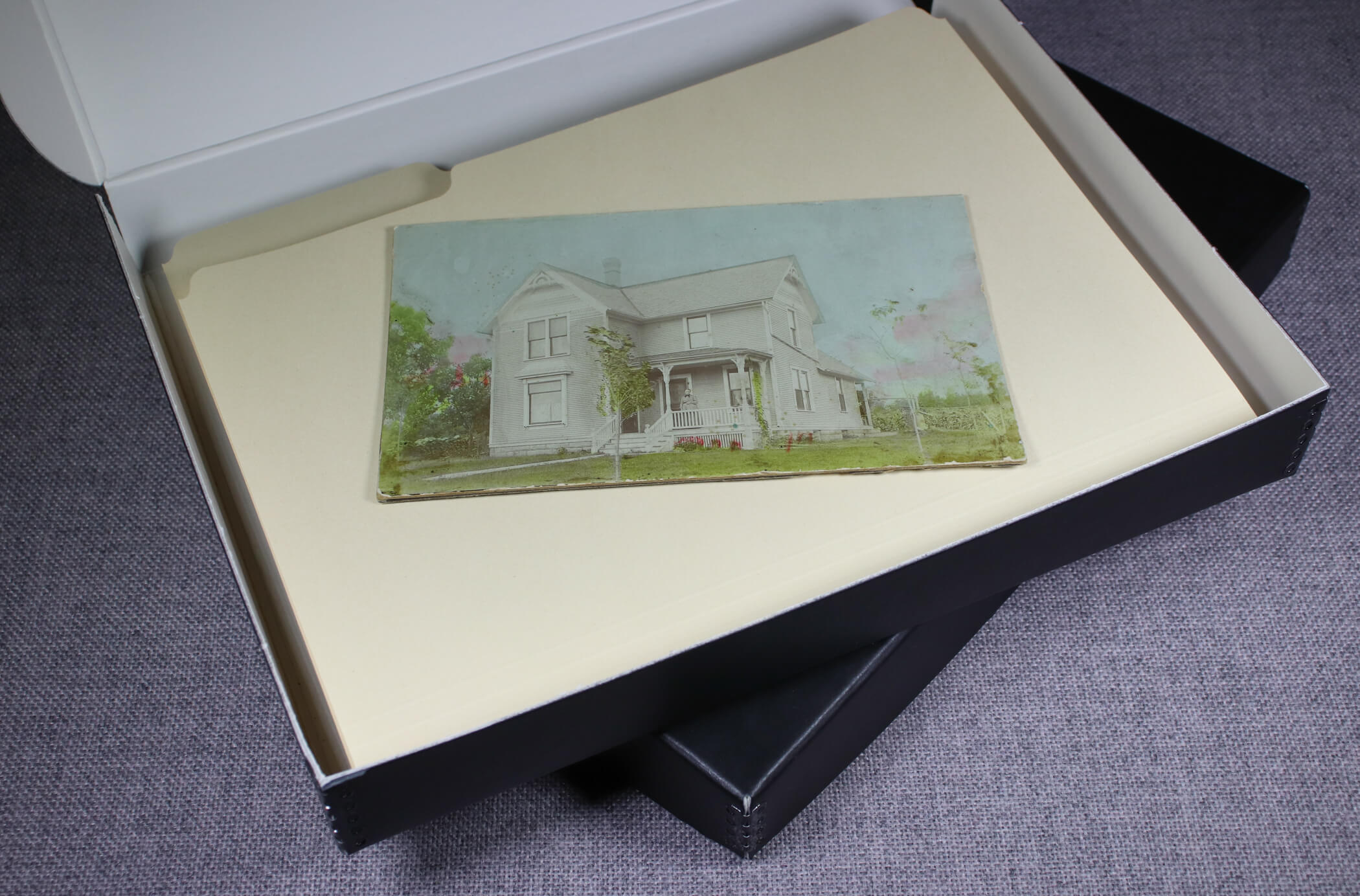5 Ideas for Organizing Family Photos and Keepsakes
The beginning of the year is a popular time to declutter, and for some, that will mean tackling family memorabilia. The sheer amount of it, and what to do with it — whether photos, papers, or objects — can be overwhelming.

Photo by Susan De Vries
The beginning of the year is a popular time to declutter, and for some, that will mean tackling family memorabilia. The sheer amount of it, and what to do with it — whether photos, papers, or objects — can be overwhelming. Here are a few ideas to get you moving to a more organized, and accessible, family collection.
1. Assess how much you have and what your goal is
While some might have a small stash of personal items and others a pile of inherited photos and objects, either way, think about how accessible you want the items to be. Do you want to have an album of photos you can flip through? Boxes of photos safely stored away from heat and water until you have time to spend with them?

2. Break the project down into manageable chunks
Don’t be paralyzed into inaction because you don’t have the perfect tools or supplies or even thinking of diving in just too much. While ultimately using the appropriate archival supplies is ideal, you can still take some steps to organize without all the supplies in place or a large budget.
Start by deciding how you want to organize and, most important, how you want to use the images. Are they mostly family photos where organizing chronologically makes the most sense or are there themes like travel, family holidays, or graduations that are important? Categories are very personal, and there really isn’t a wrong answer for a personal collection — whatever will get you motivated.
Put aside any albums or scrapbooks that you want to document and begin with loose photographs. Set up a box or bin for each year, decade, or theme and start sorting without making any decisions about what to keep or not — that will slow you down.
Once you have all the loose photos sorted, you can then take each box one at a time to sort through in more detail. You might find multiple copies of photos from a family trip in the 1990s that can be winnowed down or impossibly blurry images that can be set into a discard pile.
If you are weighing whether to keep something or toss, ask if it tells a story. For example, is a property tax statement or mortgage record part of the history of a house, and do you have a photo of the house in question?
While many family photos won’t be of interest to a wider audience, some images of street scenes or architecture or a public person might be exceptions. If you think you might have something, document what you have, take notes as you are sorting, and photograph the items. When you are done organizing, you can gather your notes to assess what you have.
3. Digitize or photograph, but don’t necessarily toss
Digitizing family photos and photographing objects is a great way to share items and memories with multiple family members and friends, but for irreplaceable items, don’t make the mistake of thinking you can just toss it once it has been documented. Digital files, and the media used to store them, can fail, become outdated, or become inaccessible. So keep the original or pass it on to another family member if you can, and make sure you have multiple backups for your digital files. Archivists recommend following the 3-2-1 rule: Have three copies of your digital files, two of those copies should be on different types of media, and one copy should be stored somewhere outside of your home.
For albums, if the photos are in stable photo sheets, you may choose to leave them as they are for now. If you have any magnetic albums with sticky adhesive pages, document the order of the photos by scanning or photographing the album, and then carefully remove the photos. Those sticky sheets are damaging to photos.
For objects that are so degraded they can’t be saved or for heirlooms you are going to pass on to someone else, document them in photographs so you have a memory of the piece. Photographs of the item can always be enlarged, printed, and framed for a striking reminder.

4. Make memories and memorabilia accessible
For photos, postcards, or other printed ephemera that you want to be able to refer to regularly, a binder with archival photo pages is a simple, safe, and not too pricey solution. Archival sleeves — made of plastic that won’t harm photos — can be found in a range of sizes to fit all manner of prints. If your original organization method when sorting photos still makes sense, you may end up with a binder for each theme or for each decade. Loose photos and mounted photos can also be organized in acid-free folders and stored in archival photo boxes.
If you have photos or objects that you have scanned or photographed and won’t need to regularly reference, then it is important to make sure that you have them stored away from areas that might easily flood, near water pipes that might burst, or in spots with extreme heat. This means avoiding basements or attics if you have them or, for apartment dwellers, avoiding a spot right next to a radiator that will blast them with heat. A closet without water or heat pipes is a good option. If you have no choice, make sure that your items are in watertight storage, such as a heavy-duty plastic bin from Stereolite or Rubbermaid, to give them a chance in the worst case scenario. Never place items or boxes directly on the floor, especially in basements of apartment buildings or houses, where they will wick up moisture and become musty.

5. If you love something, put it on display
For most of us, our family memorabilia is highly personal and not necessarily something that will be making its way into a museum collection. If it is an item that sparks a memory, why not make it part of your decor? A collection of buttons or a rainbow of vintage school prize ribbons can be pinned onto some vintage fabric and framed, family silver can be stitched with cotton thread onto linen stretched over an acid free backing board and framed, or you can create your own mini museum exhibition with a rotating display of objects in a glass or acrylic vitrine. Unusual objects such as tools and lunchboxes can be out and mixed in with books on shelves. Just make sure to hang or display your family objects away from sunlight and blasting radiators. A photograph of something fragile such as a family tree made in the 1920s can be framed and displayed while the original is tucked away safely. Great-Aunt Mabel’s satchel of holiday cards can be a fun visual display of design over the decades as well as a source of family history. If you can’t save them all, glean all the family deets from them you can, scan or frame some, and find a new home for the rest.

[Photos by Susan De Vries]
Related Stories
- 5 Brownstone Storage Secrets of Professional Organizers Revealed
- The Insider: Ingenious Small Tweaks Banish Kiddie Clutter in Brooklyn Heights Condo
- Cleaning Out Your Closet in 2020? Here’s Where to Donate Your Stuff in Brooklyn
Email tips@brownstoner.com with further comments, questions or tips. Follow Brownstoner on Twitter and Instagram, and like us on Facebook.









What's Your Take? Leave a Comment